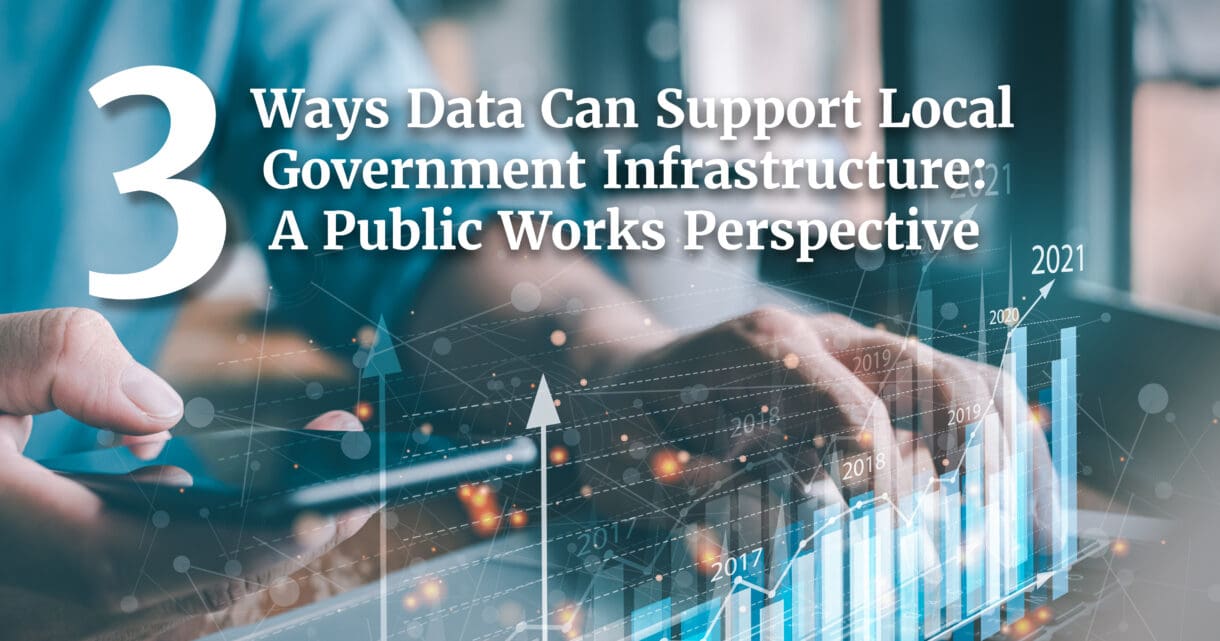
From a public works standpoint, data can often feel more like an obstacle than an opportunity. Massive quantities of raw data pile up, including sensor readings, GIS layers, maintenance logs, and community feedback. All of this makes it challenging to distill meaningful insights that resonate with elected officials or the general public. But when structured correctly, data becomes an ally to local government infrastructure. It drives transparency, strengthens trust, and supports smarter infrastructure decisions. For public works professionals, the key lies in how data is collected, interpreted, and communicated.
Here are three ways data can support local government infrastructure through public works:
1. Turning Data into Actionable Insights
Data is only as useful as the story it tells. Public works professionals often face the challenge of translating raw data into insights that can guide policy and investments. This is where tools like dashboards, interactive GIS maps, and lifecycle modeling come into play. By visualizing conditions, like pavement quality scores or stormwater runoff patterns, teams can identify areas most in need of repair or attention.
In Cary, North Carolina, staff use predictive analytics to plan for future water infrastructure upgrades based on growth trends and usage patterns. These insights are then distilled into technical reports and, more importantly, executive summaries that guide budget conversations and project prioritization.
2. Building Trust with Executive Summaries
Most elected officials don’t have the time to sift through hundreds of pages of technical documentation. Instead, they rely on well-crafted executive summaries that answer three core questions:
- What’s the important data?
- What’s the impact on the public?
- How can I explain this to my constituents?
For Town of Cary Mayor Harold Weinbrecht, executive summaries often prompt meaningful conversations.
“There’s usually a verification moment for me,” he says. “I’ll ask myself, ‘Really, they did that?’ Then I will find where the data is and look for it in the report. Other times, I’ll find questions that I attempt to answer myself, but will also rely on the staff because it’s more valuable to have that conversation with those who put the report together than it is to filter through hundreds of lines of data.”
Executive summaries provide a vital bridge between technical staff and decision-makers, creating clarity, enabling trust, and ultimately shaping more informed policy.
3. Engaging the Public Through Clear Communication
Transparency isn’t just the best practice, it’s an expectation. Residents want to know how decisions are made, especially when it comes to infrastructure that affects their daily lives. Data, when shared through storytelling and visuals, becomes a powerful tool for public engagement.
For example, public works departments can use before-and-after images of road resurfacing projects, charts showing cost savings from preventative maintenance, or infographics highlighting flood mitigation efforts. These assets help tell a relatable story and give communities confidence that their local government is planning wisely.
Conclusion
While data in its raw form can feel overwhelming, it becomes a powerful force when transformed into clear, actionable information. Public works professionals are in a unique position to shape that transformation, bridging the gap between engineers, elected officials, and everyday citizens. By turning data into insights, building trust through executive summaries, and telling compelling stories about infrastructure, local governments can make smarter, more sustainable decisions that improve the quality of life for their communities.
